April 16-22, 2023
The winter that won't let go
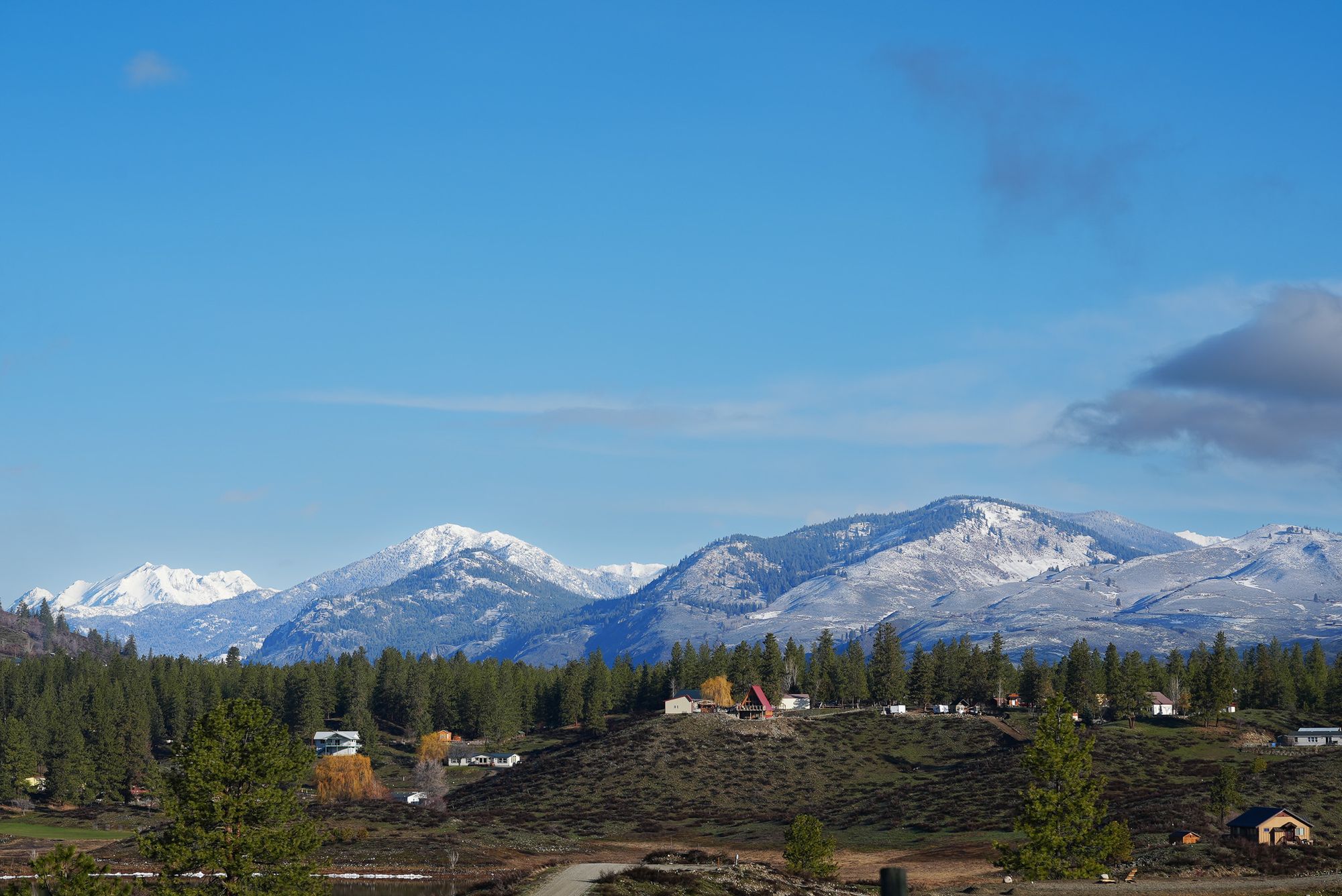
This seems to be turning into the winter that won't give up as fresh snow dropped nearly to the valley floor on multiple days, and cold hard winds with gloomy skies and scattered rain lingered for days.
Week in Review
While the temperatures and rain might feel cold to us, it still seems to have triggered the emergence of our first amphibians. There were multiple reports of singing spadefoot toads and pacific chorus frogs showing up at breeding ponds, while long-toed salamanders were spotted walking around in search of water.
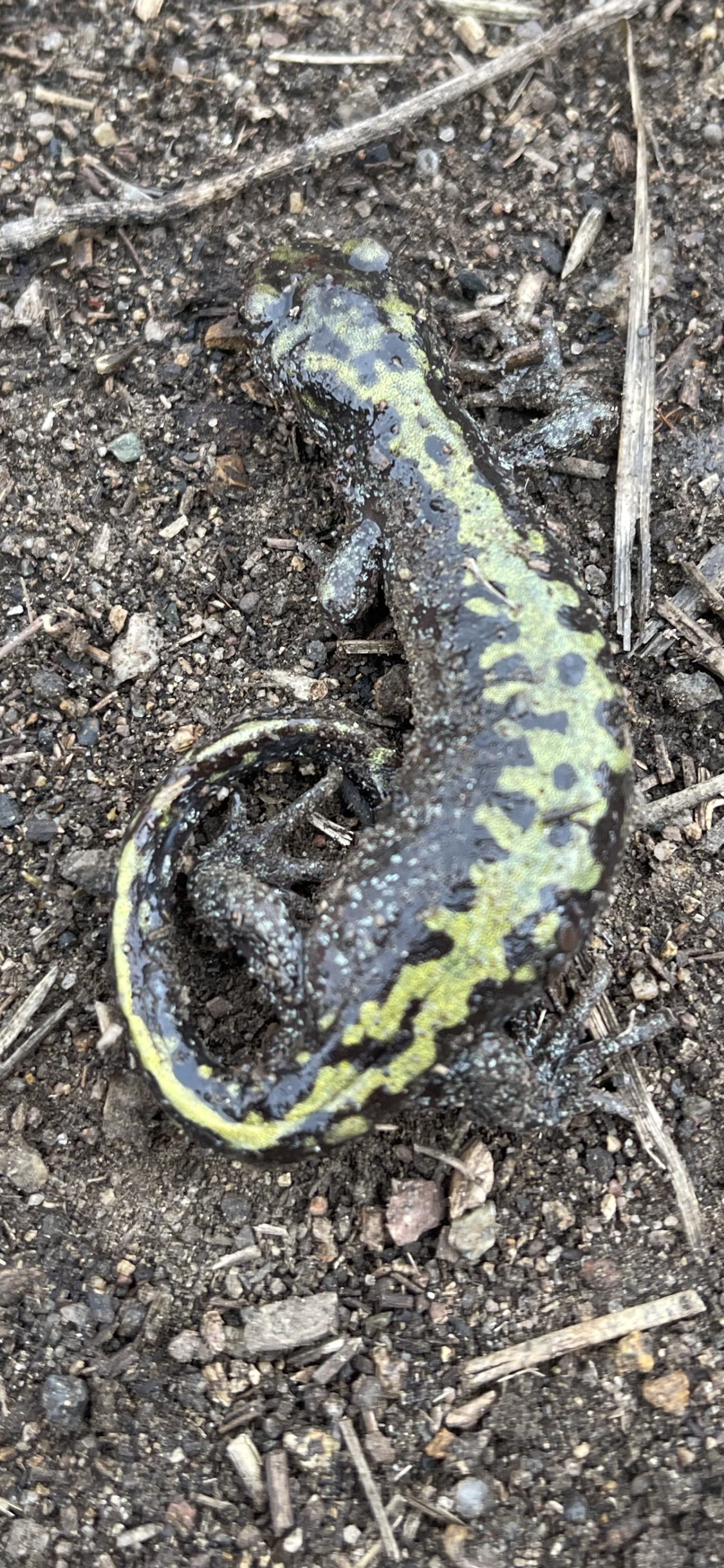
On one of the sunny, warmer days both of our local garter snakes were spotted peeking their heads out of wintering spots among rocks near the Methow River. Both species have a prominent yellow stripe down their back, but the wandering garter snake has a slate-gray body with black spots, and the valley garter snake has a black body with red spots and a strong yellow and red wash.
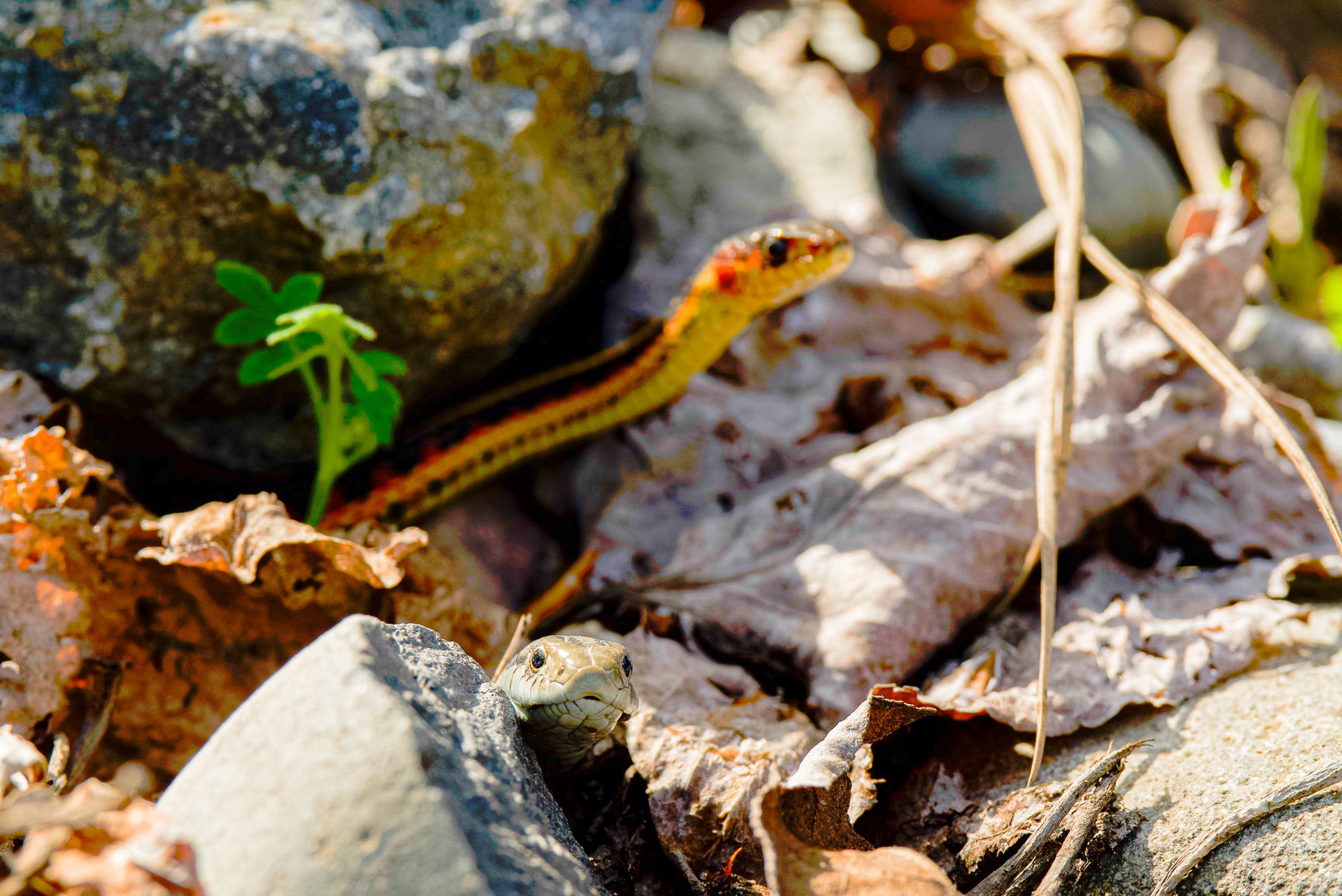
The most prominent changes, however, have been the birds and there are almost too many new arrivals to list. It appears that both rufous and calliope hummingbirds arrived around April 17th. House wrens, ruby-crowned kinglets, and turkey vultures showed up around the same time. Half a dozen scaup, and a noisy flock of around 100 Canada geese appeared at Twin Lakes on April 19. The first rough-winged swallow was spotted on April 20.
Dana Visalli recorded his first yellow-rumped warbler of the year on April 16, and he provided this remarkable record of their arrival dates over the years:
April 3, 2022
April 7, 2005
April 8, 2007
April 8, 2009
April 9, 2012
April 10, 2018
April 13, 2017
April 15, 2006
April 16, 2023
April 17, 2010
April 17, 2011
April 18, 2014
April 20, 2013
April 20, 2019
Another notable change has been the abrupt transformation of American goldfinches as they molt from their drab winter plumage into their brilliant lemon-yellow breeding colors. Notice in these pictures that they only molt their body feathers, while their wing and tail feathers remain unchanged.
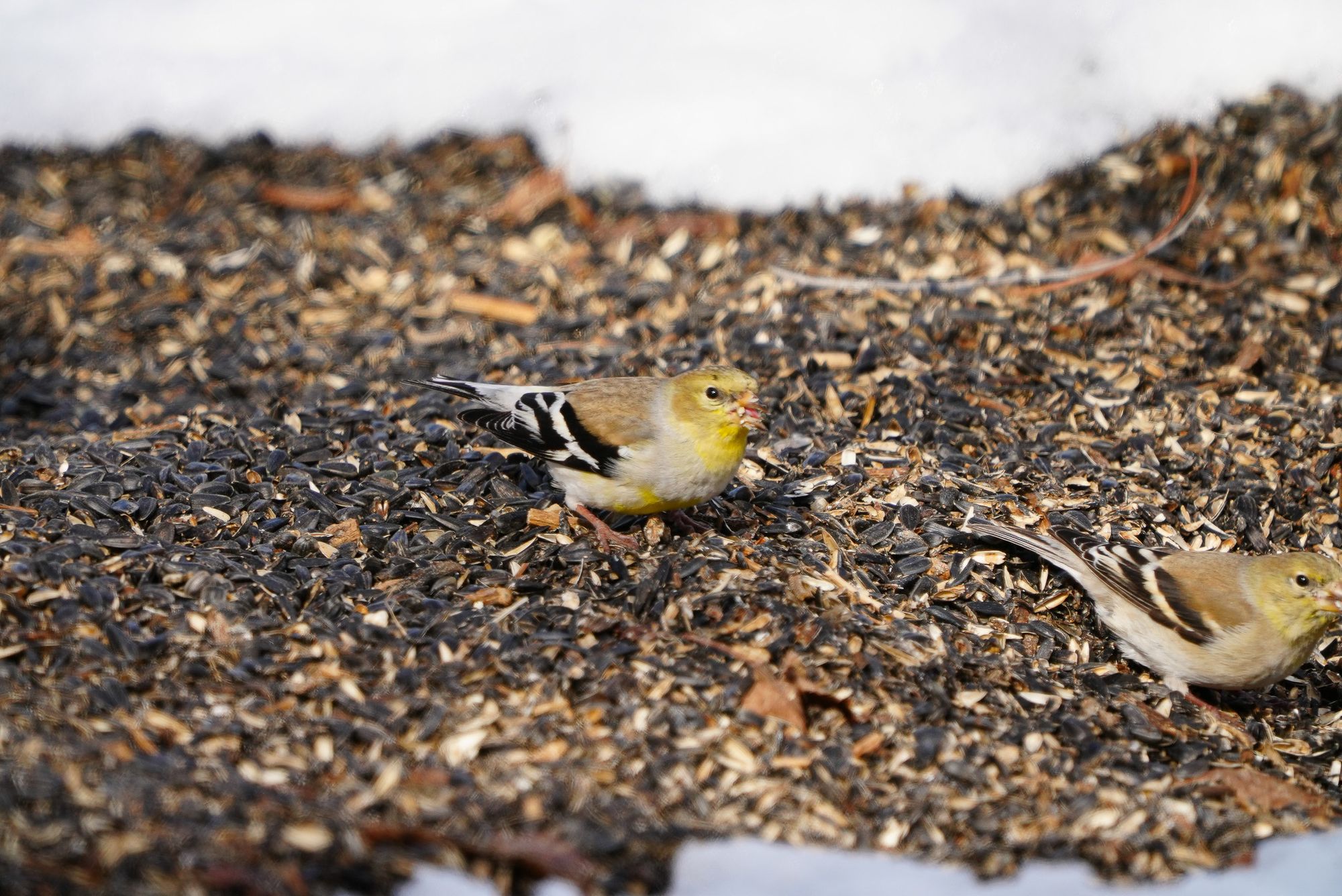
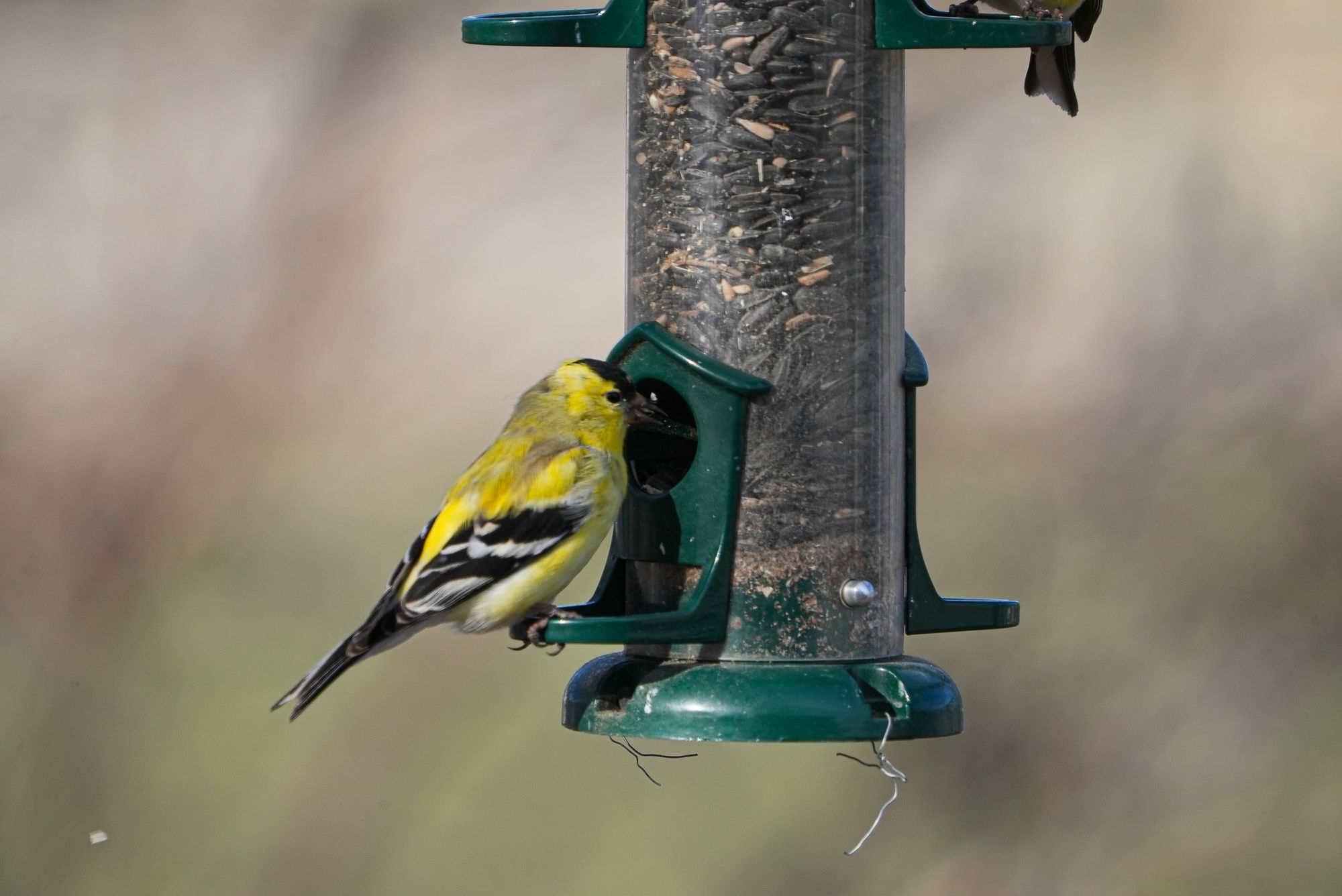
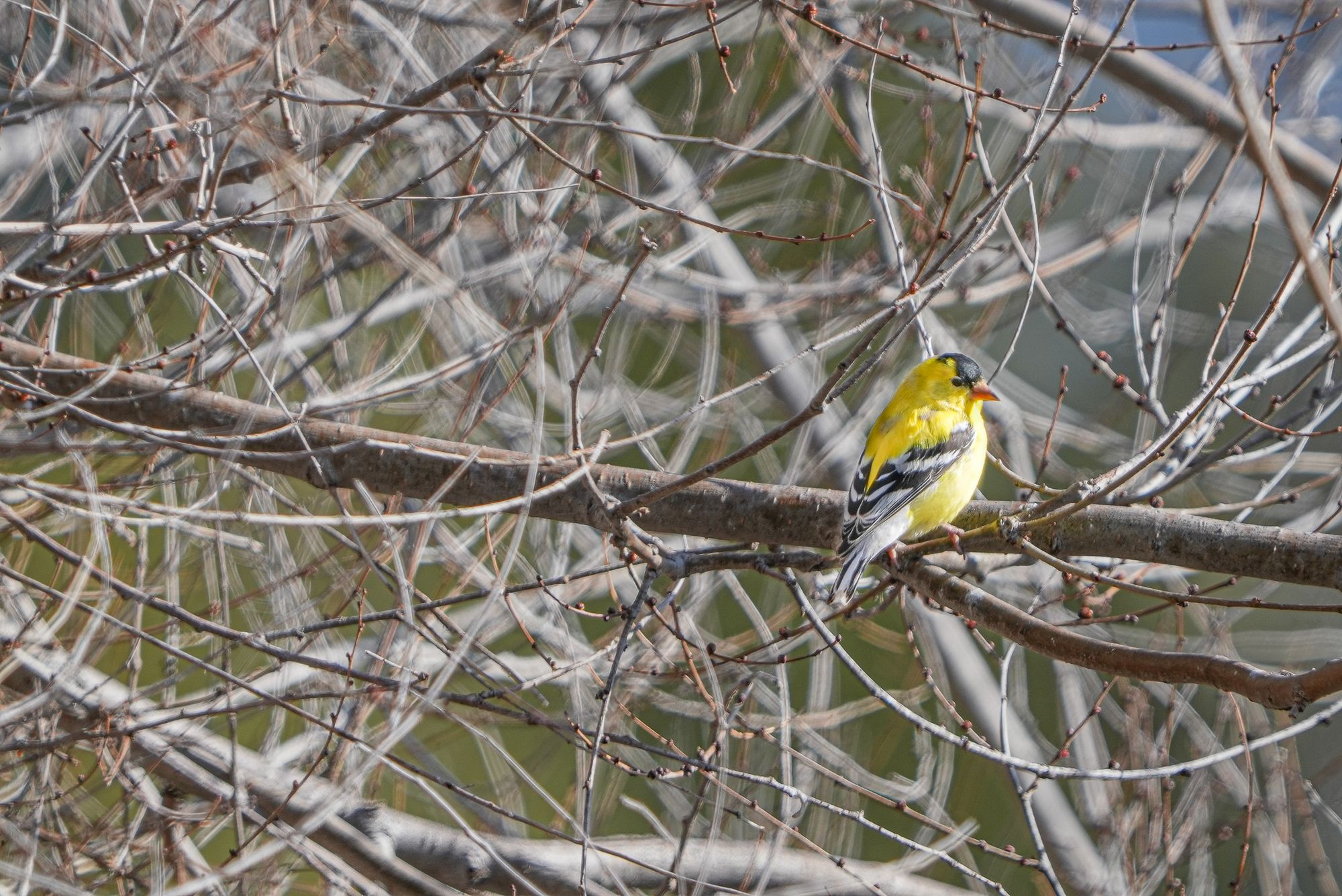
And speaking of abrupt transformations, we have to mention how fast the ice melted off Big Twin Lake this week! Over two afternoons on April 17 and 18 the ice went from completely covering the lake (except for a small ring around the margins) to disappearing entirely. In this time-lapse video you can see the ice slowly melting on April 17, then quickly changing on April 18. It's dramatic!
Observation of the Week: Black lace-weaver
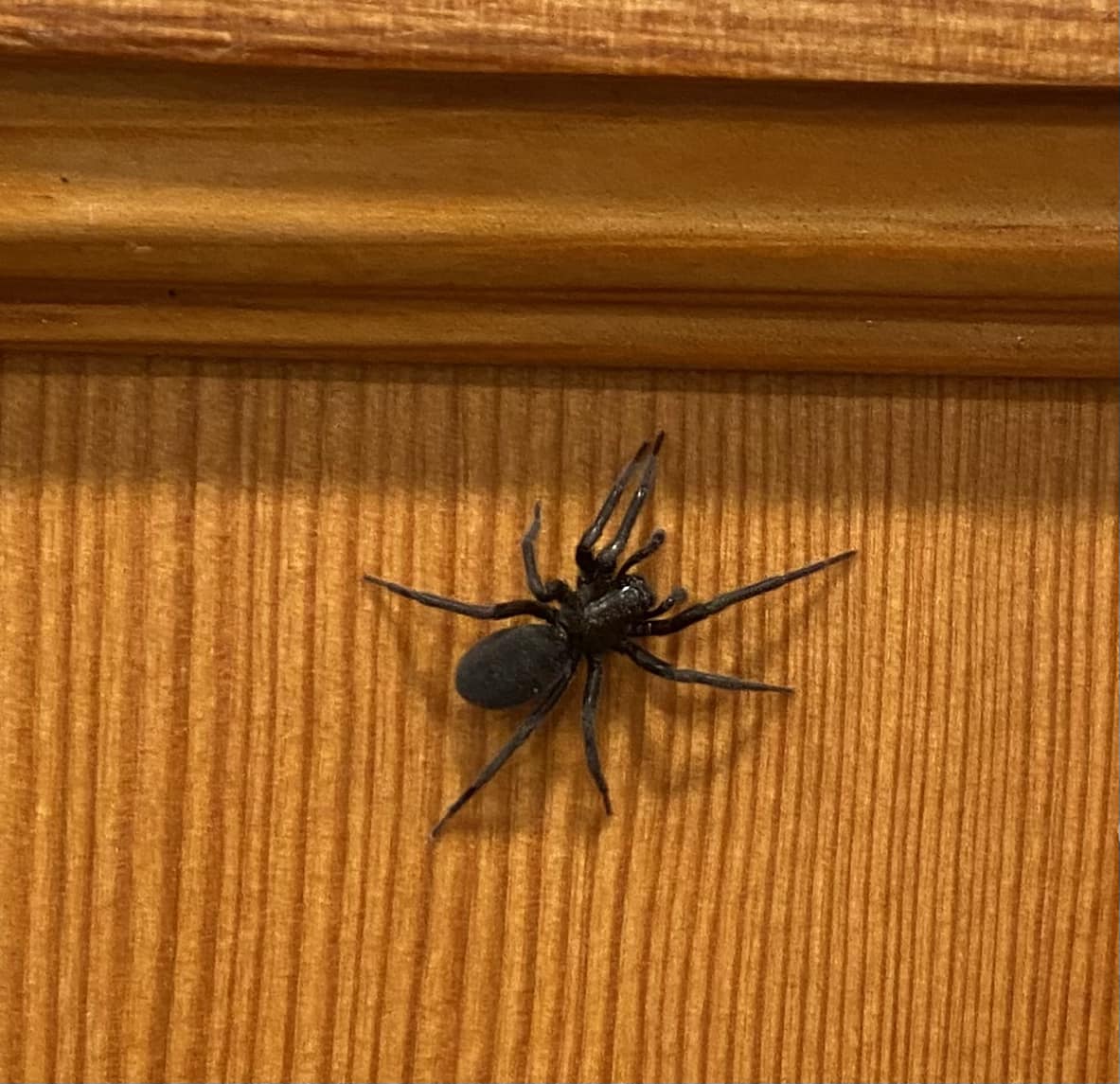
A sighting of a black lace-weaver this week puts this remarkable spider on our radar. These relatively large (sometimes over half-an-inch long), dark brown spiders are native to Europe but are now widespread and common in North American and should be expected in the Methow Valley.
They favor buildings and human structures and are generally nocturnal, though you may readily see males as they wander in search of mates. You might also spot their unique cribellate webs which are notable for their bluish woolly appearance.
Unlike familiar spider webs, which are made of thick, sticky threads, cribellate webs are created as tiny spigots in the spider's abdomen squirt out thousands of microscopic silk strands that merge into a single, loosely tangled thread. This mass of tiny strands snags insect legs as they walk across the web rather than being sticky like other spider webs.
However, the incredible part of this spider's story is that they are matriphagous.
When a female lays eggs in the late summer she carefully tends them in a special nest, then as the spiderlings hatch she continues laying unfertile eggs to feed her babies for the first week of their lives.
But after her babies undergo their first molt a week later—she lowers her body onto her babies and lets them to eat her alive!!!
If you can handle watching this YouTube video, it's nature at its most gruesome and weird.
